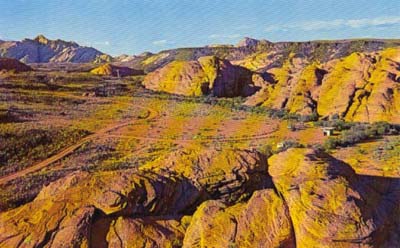
WASHINGTON COUNTY HISTORICAL SOCIETY (Washington County, Utah)
SNOW CANYON STATE PARK
Washington County, Utah
LOCATION
Snow Canyon State Park1002 Snow Canyon Drive
Ivins, UT 84738-6194
(435)628-2255
http://stateparks.utah.gov/parks/snow-canyon
11 miles northwest of St. George
HISTORY
Artifacts reveal the presence of humans in Snow Canyon as early as 500 B.C.Ancestral Puebloans, also known as Anasazi, inhabited this area from A.D. 200 to 1250. They relied on the canyon for hunting and gathering. Food collected in the canyon allowed them to supplement the corn, squash and other crops they grew along the nearby Virgin and Santa Clara rivers.
Southern Paiutes used the canyon from A.D. 1200 to the mid-1800s for hunting deer, rabbits, and gathering seeds, roots, nuts and berries. They made baskets, sandals and other everyday items from canyon plants.
From ancient cultures to 19th century Mormon settlers, humans have used this canyon for thousands of years.
The first known Europeans to explore the area were the Dominguez-Escalante Party in 1776. Fur trappers, including Jedediah Smith, followed later and government survey parties later still. By 1849, Mormon leader Brigham Young sent men to this area to scout future town sites.
By 1854, Mormon pioneers started a mission at nearby Santa Clara, followed by St. George in 1861. Story has it that early pioneers happened upon Snow Canyon while searching for lost cattle.
Early ranchers used the canyon for cattle grazing. Pioneer newspapers record picnicking and recreation in Johnson Canyon as early as 1871. Pioneer journals tell of a young girl named Maude Johnson who sang for the picnickers from beneath the canyon's arch, making lovely use of the great acoustics.
Some pioneers left a record of their canyon visits (see the photo below). Hike the short Pioneer Names Trail and view historical names written on the canyon wall in axle grease, dating back to 1881.
Formation of the current state park started when Washington County donated 296 acres of land the the State Parks Commission. Then the state purchased Joseph Blake's 898 acre ranch for $20,000. This land was transferred to the State Parks Commission in 1959 and Dixie State Park was created.
The state purchased additional private tracts totalling 640 acres during 1960. In 1964, the U. S. Bureau of Land Management transferred title to 3,854 acres of Federal land to the State of Utah. The park name was changed to Snow Canyon State Park, honoring Lorenzo and Erastus Snow, early Utah leaders. The state and county began making improvements right away. They constructed a water line and improved Highway 18 through the park. Hot showers were added to the campground in 1984.
Movies partly made in the park include "A Man Alone", "Butch Cassidy and the Sundance Kid", "Grand Canyon", "High School Musical 2", "Hondo", "Into the Paradise", "Jeremiah Johnson", "Mackenna's Gold", "Run of the Arrow", "The Conqueror", "The Electric Horseman", "The Flintstones", "The King and Four Queens", "The Man Who Loved Cat Dancing", and "They Came To Cordura".
While people no longer rely on the natural resources found here for survival, the canyon continues to be important to us. The scenic splendor of Snow Canyon provides the perfect backdrop for spiritual, educational, and recreational opportunities for outdoor enthusiasts of all kinds. See the park website for information on current usage.
PHOTOS
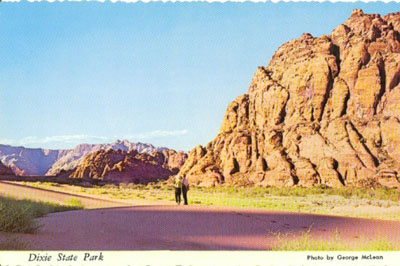 WCHS-00845 Dixie State Park Postcard |
 WCHS-00846 Snow Canyon State Park Postcard |
Photographs by Maria Werner, courtesy of the Snow Canyon State Park (SCSP) collection:
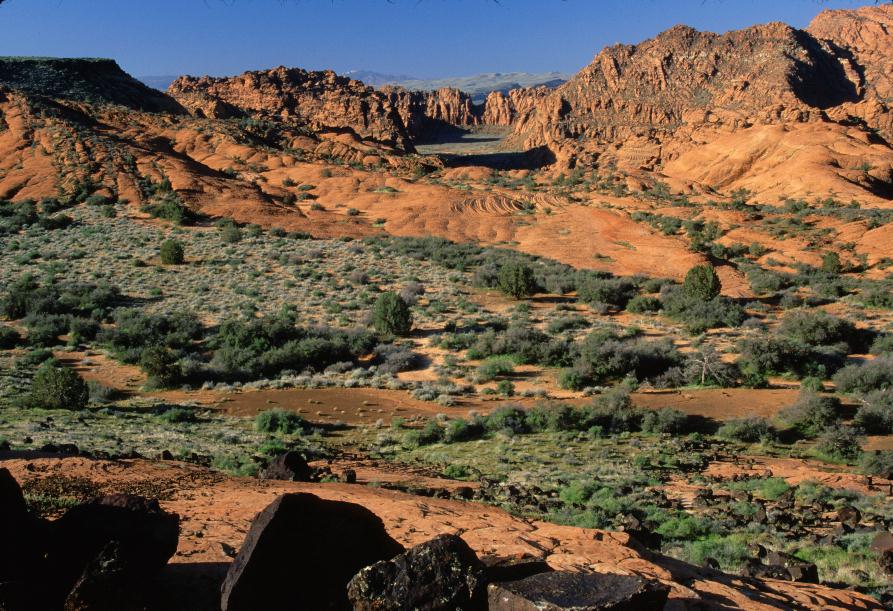
|

|
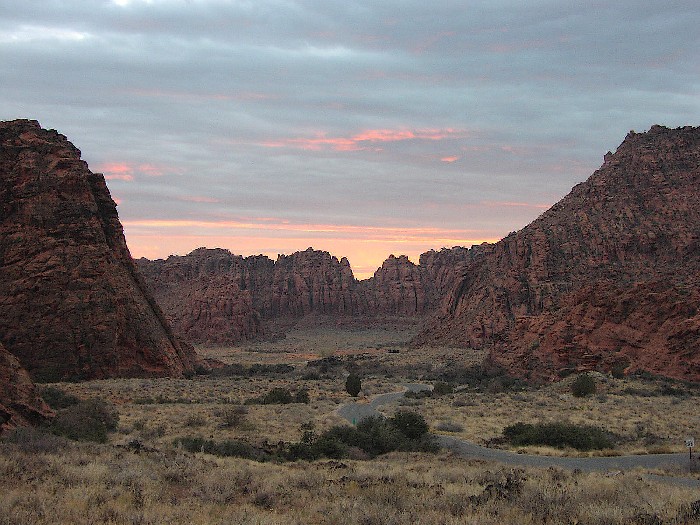
|
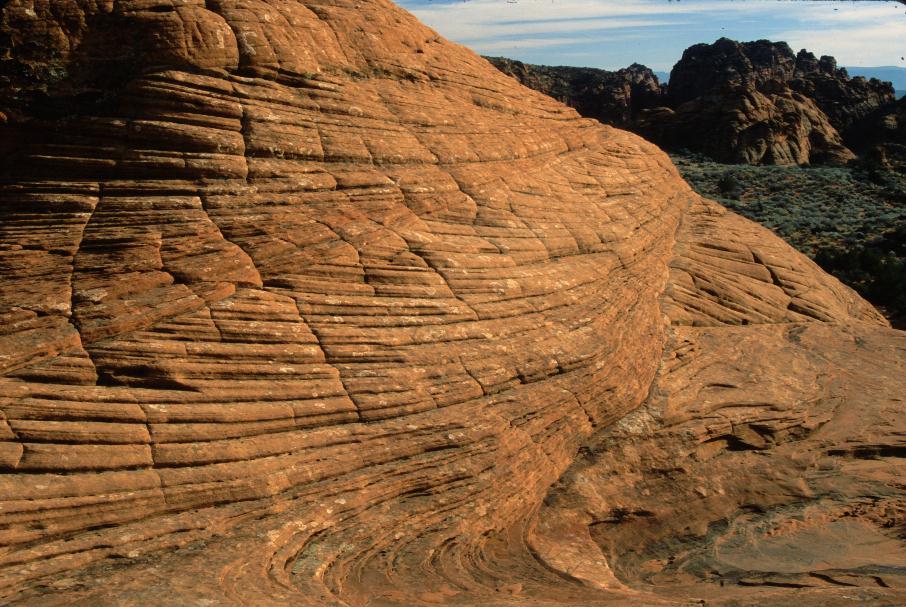
|
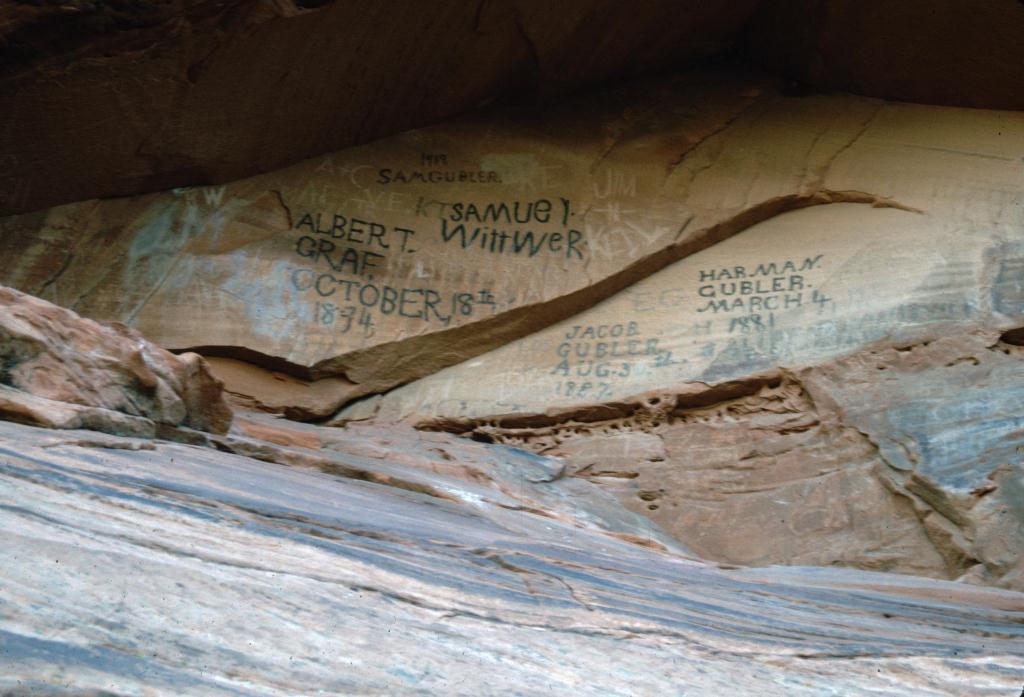
|
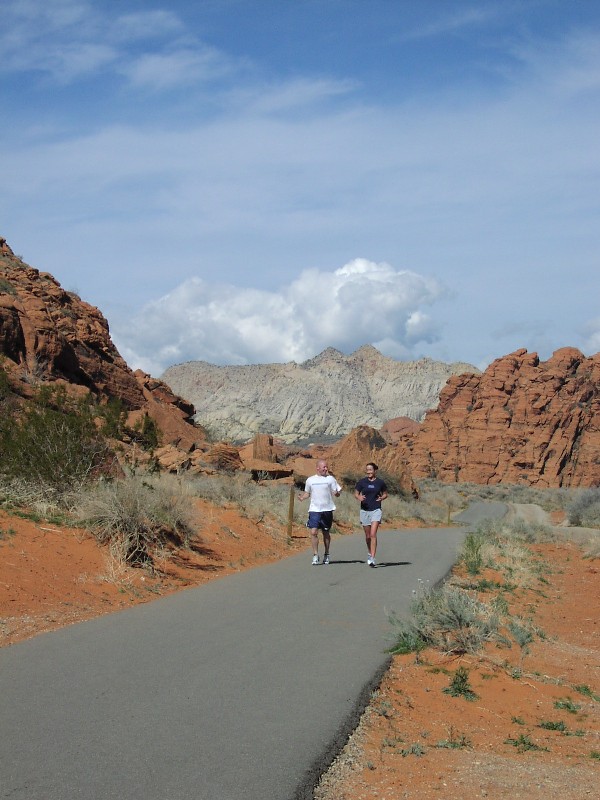
|
REFERENCES
Southern Utah Memories: Snow Canyon State Park was part of Orval Hafen's vision of a tourist mecca,by Loren R. Webb, October 11, 2013